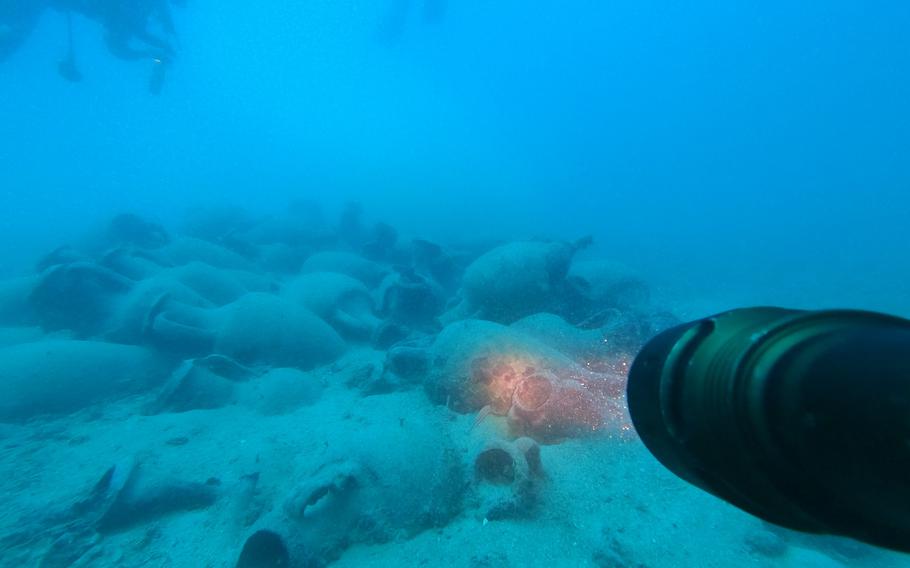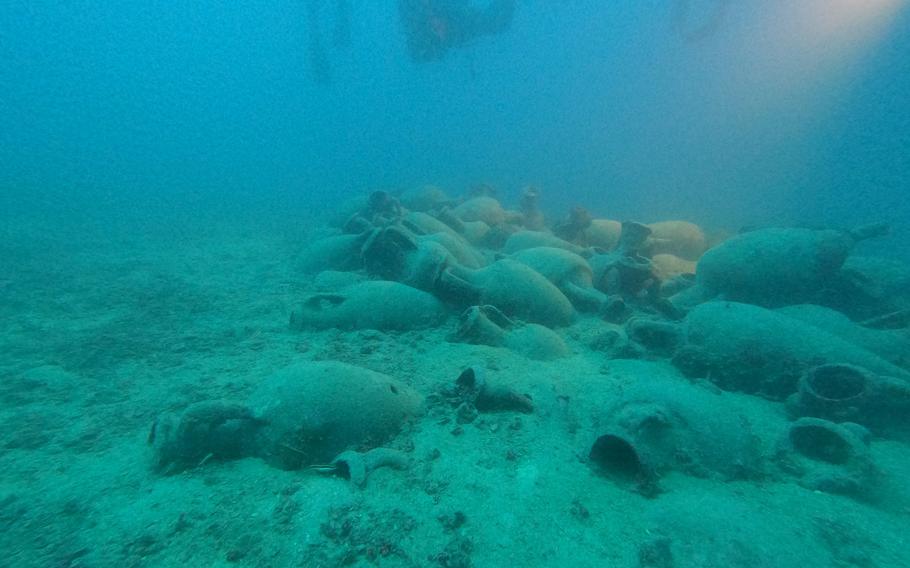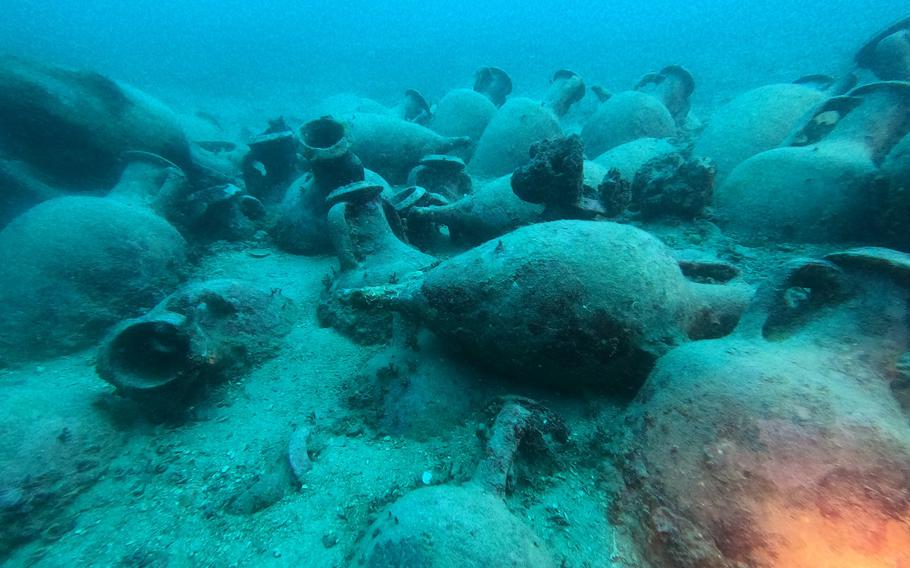
The Croatian and Italian navies planned a joint training for underwater mine clearing operations off the coast of Šćedro Island. Searching the seafloor about 160 feet below the surface, divers found a 2,200-year-old shipwreck. (Saša Denegri and Robert Kramarić/Croatia’s Ministry of Culture and Media/Facebook)
(Tribune News Service) — While training off the coast of Croatia, scuba divers spotted something rising from the seafloor — and stumbled on a well-preserved ancient shipwreck, photos show.
The Croatian and Italian navies planned a joint training for underwater mine clearing operations off the coast of Šćedro Island, Croatia’s Ministry of Culture and Media said in a June 23 news release. The training involved remote-operated vehicles and scuba diving.
Officials scanned the island’s coast and selected some sites with unusual underwater structures for the divers to explore, the release said.
Searching the seafloor about 160 feet below the surface, divers found a 2,200-year-old shipwreck. Photos show the ruins.
Underwater archaeologists Saša Denegri and Tea Katunarić Kirjakov identified the wreck as one of the earliest, completely preserved shipwrecks in the eastern Adriatic Sea, the release said.
The sunken ship was still loaded with ancient Roman pottery dating to the 3rd century B.C., archaeologists said. Photos show the pile of artifacts on the seafloor.

The sunken ship was still loaded with ancient Roman pottery dating to the 3rd century B.C., archaeologists said. Photos show the pile of artifacts on the seafloor. (Saša Denegri and Robert Kramarić/Croatia’s Ministry of Culture and Media/Facebook)
During the 3rd century B.C., the ancient Roman empire was expanding throughout the Italian peninsula, according to maps from Britannica.
Modern-day Croatia, along with other neighboring countries, was under the control of the Illyrian people during the 3rd century B.C., according to Britannica. An Illyrian queen “antagonized Rome” with a large fleet of ships during this period, leading Rome to retaliate.
By 168 B.C., the ancient Roman empire had established control of Illyria, renaming it Illyricum, per Britannica. Illyricum would remain under Roman control until the empire’s collapse and division in the fourth century A.D.
The 2,200-year-old shipwreck was found off the coast of Šćedro Island. It is the third shipwreck found near the island since 2014, the University of Split said in a news release. The island is about 290 miles southeast of Zagreb, the capital city.
Archaeologists will continue studying the shipwreck site and figure out how to protect and conserve the ruins, ministry officials said.
Google translate was used to translate the news releases from Croatia’s Ministry of Culture and Media and the University of Split.
©2023 The Charlotte Observer.
Visit charlotteobserver.com.
Distributed by Tribune Content Agency, LLC.

The Croatian and Italian navies planned a joint training for underwater mine clearing operations off the coast of Šćedro Island. Searching the seafloor about 160 feet below the surface, divers found a 2,200-year-old shipwreck. (Saša Denegri and Robert Kramarić/Croatia’s Ministry of Culture and Media/Facebook)